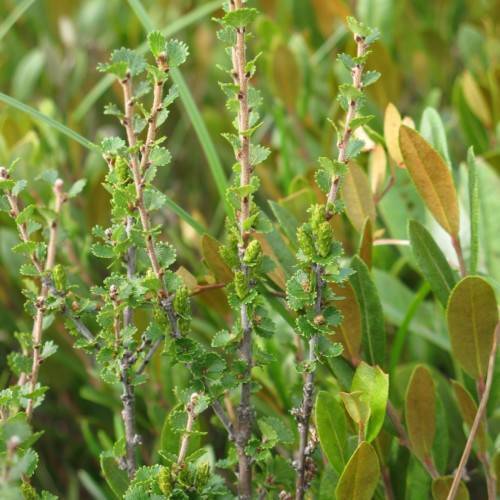
B.Michauxii X B. Pumila Var. Pumila Hybrid
Betula michauxii x var. pumila
Watering:
Minimal
Hardiness Zone:
1
Sun:
Sun, Partial Shade
Soil:
Clay, Sand, Loam
Leaf:
Yes
Growth Rate:
Low
Drought Tolerant:
Yes
Salt Tolerant:
Yes
Care Level:
Medium
watering
Scrub Birch (Betula glandulosa) should be watered weekly, approximately 1 inch of water. During the summer months, Scrub Birch should have at least 2 inches of water per week if it is not receiving adequate rainfall. In the winter, when the plant is dormant, it should be given half the amount of water as in the summer. So, approximately 1/2 inch of water a week should be sufficient in the winter. During periods of extreme drought the water can be reduced slightly, but it's important to keep the soil moist to prevent dieback due to dryness.
sunlight
Scrub Birch (Betula glandulosa) typically needs at least 6 hours of full sun each day, preferably morning sun, in order to survive and flourish. It prefers a more moist environment, so it will perform best when kept out of direct afternoon sun, which can dry out the soil. If it is grown in an area receiving less sun during the summer, caring for it involves providing protection against the sun’s heat and allowing for more shade during these months. In this case, partial shade is best, allowing a few hours of early morning sunlight and some afternoon sun, as well as providing some shade for the remaining hours.
pruning
Scrub Birch should be pruned in late winter or early spring, before any new growth appears. The best time to prune is when the plant is completely dormant. Pruning should be done to maintain or improve the form of the plant. Heading cuts are used to encourage bushiness and to remove any dead, diseased, or weak branches. Light thinning is also done to remove overly crowded branches and to open up the canopy. Make sure to never take off more than 1-third of the canopy at any given time. Any shaping or thinning that you do should be done with care to avoid damaging the plant.
